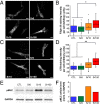Sparse feature selection methods identify unexpected global cellular response to strontium-containing materials
- PMID: 25831522
- PMCID: PMC4394289
- DOI: 10.1073/pnas.1419799112
Sparse feature selection methods identify unexpected global cellular response to strontium-containing materials
Abstract
Despite the increasing sophistication of biomaterials design and functional characterization studies, little is known regarding cells' global response to biomaterials. Here, we combined nontargeted holistic biological and physical science techniques to evaluate how simple strontium ion incorporation within the well-described biomaterial 45S5 bioactive glass (BG) influences the global response of human mesenchymal stem cells. Our objective analyses of whole gene-expression profiles, confirmed by standard molecular biology techniques, revealed that strontium-substituted BG up-regulated the isoprenoid pathway, suggesting an influence on both sterol metabolite synthesis and protein prenylation processes. This up-regulation was accompanied by increases in cellular and membrane cholesterol and lipid raft contents as determined by Raman spectroscopy mapping and total internal reflection fluorescence microscopy analyses and by an increase in cellular content of phosphorylated myosin II light chain. Our unexpected findings of this strong metabolic pathway regulation as a response to biomaterial composition highlight the benefits of discovery-driven nonreductionist approaches to gain a deeper understanding of global cell-material interactions and suggest alternative research routes for evaluating biomaterials to improve their design.
Keywords: human mesenchymal stem cells; mevalonate pathway; microarray analysis; sparse feature selection analysis; strontium-releasing biomaterials.
Conflict of interest statement
Conflict of interest statement: M.M.S. is a coinventor on intellectual property on strontium-containing bioactive glasses (WO2007/144662).
Figures




References
-
- Place ES, Evans ND, Stevens MM. Complexity in biomaterials for tissue engineering. Nat Mater. 2009;8(6):457–470. - PubMed
-
- Pashuck ET, Stevens MM. Designing regenerative biomaterial therapies for the clinic. Sci Transl Med. 2012;4(160):160sr4. - PubMed
-
- Meunier PJ, et al. The effects of strontium ranelate on the risk of vertebral fracture in women with postmenopausal osteoporosis. N Engl J Med. 2004;350(5):459–468. - PubMed
-
- Reginster JY, et al. Strontium ranelate reduces the risk of nonvertebral fractures in postmenopausal women with osteoporosis: Treatment of Peripheral Osteoporosis (TROPOS) study. J Clin Endocrinol Metab. 2005;90(5):2816–2822. - PubMed
Publication types
MeSH terms
Substances
Grants and funding
LinkOut - more resources
Full Text Sources
Other Literature Sources
Molecular Biology Databases

